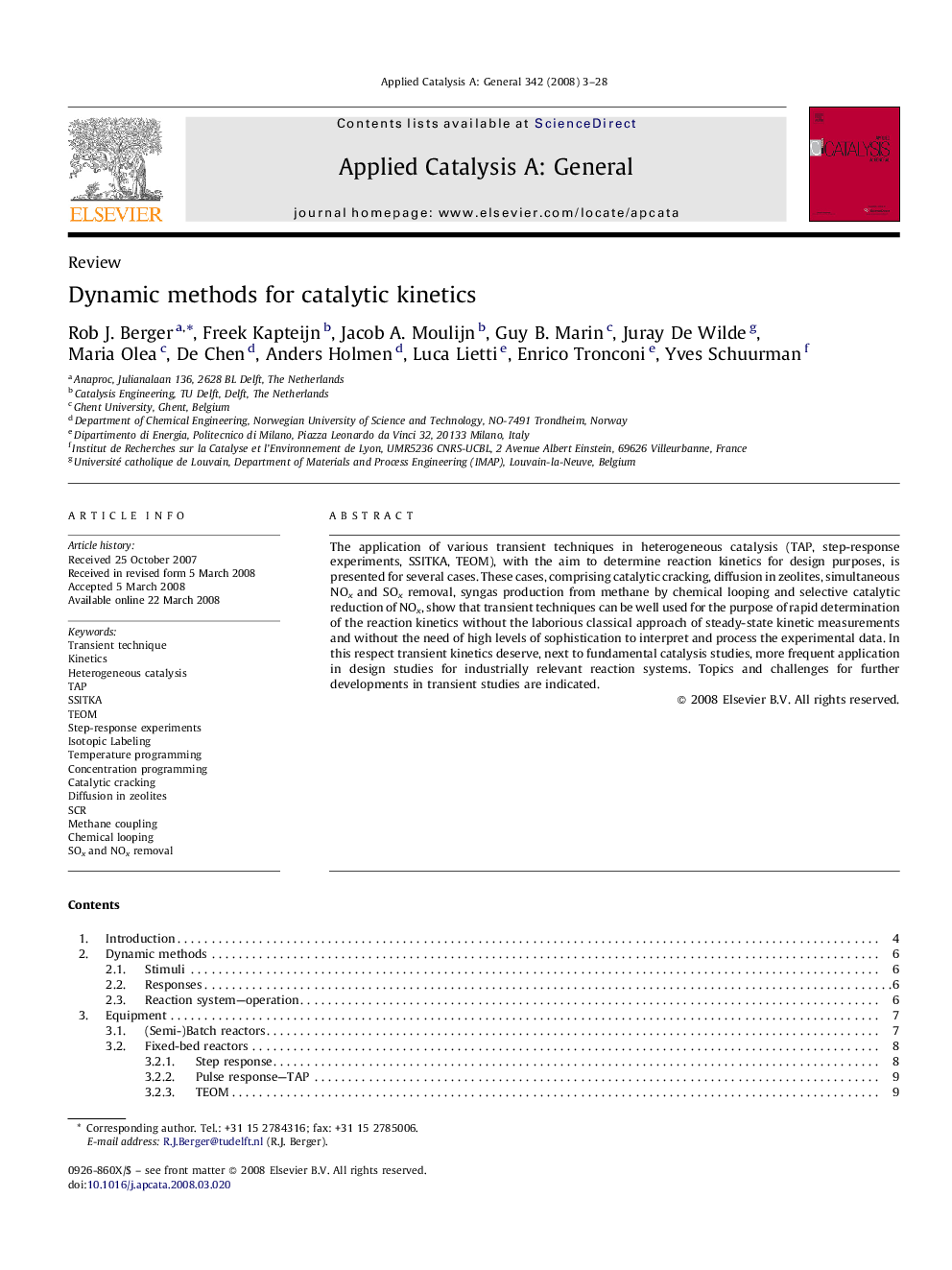| کد مقاله | کد نشریه | سال انتشار | مقاله انگلیسی | نسخه تمام متن |
|---|---|---|---|---|
| 43008 | 45951 | 2008 | 26 صفحه PDF | دانلود رایگان |

The application of various transient techniques in heterogeneous catalysis (TAP, step-response experiments, SSITKA, TEOM), with the aim to determine reaction kinetics for design purposes, is presented for several cases. These cases, comprising catalytic cracking, diffusion in zeolites, simultaneous NOx and SOx removal, syngas production from methane by chemical looping and selective catalytic reduction of NOx, show that transient techniques can be well used for the purpose of rapid determination of the reaction kinetics without the laborious classical approach of steady-state kinetic measurements and without the need of high levels of sophistication to interpret and process the experimental data. In this respect transient kinetics deserve, next to fundamental catalysis studies, more frequent application in design studies for industrially relevant reaction systems. Topics and challenges for further developments in transient studies are indicated.
This paper reviews different transient methods amenable for determination of reaction kinetics. Transient methods allow extracting more and better kinetic information from fewer experiments compared to conventional steady-state experiments. The present day availability of experimental and analysis equipment and of more easily applicable numerical tools justifies a reappreciation of transient kinetic analysis techniques. Figure optionsDownload as PowerPoint slide
Journal: Applied Catalysis A: General - Volume 342, Issues 1–2, 30 June 2008, Pages 3–28